For over four decades, the Ford F-150 has reigned as America’s best-selling truck, and its towing capacity is a big reason why. Whether you’re hauling a boat to the lake, towing a trailer for a cross-country move, or pulling heavy equipment for work, the F-150’s versatility and power make it a top choice. But with so many engine options, model years, and configurations, understanding the F-150’s towing capacity can feel overwhelming. This guide breaks it all down, from the basics of towing power to the specifics of each engine and year, ensuring you’re equipped with the knowledge to make the most of your F-150.
Renowned automotive journalist Dan Neil once called the F-150 "the Swiss Army knife of trucks," and he wasn’t wrong. Its ability to adapt to almost any task is unmatched. Meanwhile, Edmunds has consistently praised its towing capabilities, and MotorTrend has highlighted its innovative engineering. But what makes the F-150 truly stand out? It’s not just about raw power—it’s about how that power is harnessed and delivered.
In this article, we’ll explore everything you need to know about the Ford F-150’s towing capacity. From the basics of towing power to the nitty-gritty details of each engine and model year, we’ve got you covered. So, buckle up and get ready to dive into the world of towing with the F-150.
Understanding Towing Capacity and the F-150’s Edge
So, what exactly is towing capacity? Simply put, it’s the maximum weight your vehicle can safely pull. But it’s not just about the number—factors like engine power, transmission, axle ratio, and even the truck’s frame play a role. The F-150’s lightweight yet durable aluminum body gives it a significant edge, allowing it to tow more without sacrificing fuel efficiency.
When compared to competitors like the Chevy Silverado and Ram 1500, the F-150 often comes out on top. Its combination of power, technology, and design makes it a towing powerhouse. But to truly understand its capabilities, you need to know a few key metrics: Gross Vehicle Weight Rating (GVWR), Gross Combined Weight Rating (GCWR), and payload capacity. These numbers tell you not just how much you can tow, but how much your truck can handle overall.
For example, the GVWR is the maximum weight your truck can carry, including passengers, cargo, and the trailer. The GCWR, on the other hand, includes the weight of the truck, trailer, and everything inside. Payload capacity is the amount of weight your truck can carry in its bed and cab. Understanding these terms is crucial to safely and effectively using your F-150 for towing.
Towing by Engine & Model Year
Let’s get real—towing capacity isn’t just about brute strength. It’s about the marriage of horsepower, torque, and engineering smarts. The Ford F-150 has been flexing its muscles for decades, but not all engines are created equal. Some are built for sipping fuel while hauling a weekend camper, while others are designed to drag a small house down the highway without breaking a sweat.
Engine Options and Their Impact on Towing
First up, the engines. The F-150’s lineup reads like a menu at a high-end steakhouse—plenty of options, each with its own flavor. The 3.5L EcoBoost V6 is the undisputed king of towing, boasting up to 14,000 lbs of grunt when paired with the Max Tow Package. Then there’s the 5.0L Coyote V8, a classic choice for those who love the roar of eight cylinders (and don’t mind fewer trips to the gas station). The PowerBoost Hybrid? It’s the overachiever, blending electric torque with gas power for surprisingly strong towing—up to 12,700 lbs.
But wait, there’s more! The 2.7L EcoBoost is the little engine that could, perfect for lighter loads (think jet skis or a pop-up trailer). And let’s not forget the 3.3L V6, the budget-friendly workhorse that still pulls a respectable 8,200 lbs. Pro tip: if you’re regularly towing heavy, skip the coffee-shop engines and go straight for the 3.5L EcoBoost. Your trailer will thank you.
Year-by-Year Breakdown
The F-150’s towing chops have evolved faster than a TikTok trend. Here’s the quick and dirty on how things have changed:
- 2010-2014: The 6.2L V8 was the big dog, towing up to 11,300 lbs. The EcoBoost engines debuted in 2011, shaking up the game with turbocharged efficiency.
- 2015-2020: Aluminum bodywork shed weight, freeing up more capacity for payload and towing. The 3.5L EcoBoost hit its stride, reaching 13,200 lbs with the right setup.
- 2021-Present: The PowerBoost Hybrid joined the party, and the 3.5L EcoBoost got even stronger, now hitting 14,000 lbs. Ford also introduced the Pro Trailer Backup Assist, because nobody likes jackknifing in a Walmart parking lot.
Real-World Examples
Let’s put this into perspective. Say you’ve got a 2023 F-150 with the 3.5L EcoBoost and Max Tow Package. You could tow:
- A 30-foot Airstream (about 7,500 lbs) with room to spare.
- A 24-foot pontoon boat (around 5,000 lbs) while barely breaking a sweat.
- Or, if you’re feeling ambitious, a small excavator (up to 14,000 lbs)—just don’t forget to check your mirrors.
Meanwhile, a 2018 F-150 with the 2.7L EcoBoost could handle a teardrop camper (about 3,000 lbs) or a pair of ATVs with ease. Moral of the story? Know your engine, know your limits, and for the love of torque, don’t try to tow a yacht with a base-model V6.
Max Tow Package: What’s Included?
Ah, the Max Tow Package—the F-150’s version of a gym membership for your truck. It’s not just a sticker on the tailgate; it’s a full suite of upgrades designed to turn your pickup into a towing titan. But what’s actually under the hood (and under the chassis)? Let’s break it down.
Components of the Max Tow Package
Ford doesn’t mess around with this package. Here’s what you get:
- Upgraded Radiator: Because towing heavy loads turns your engine into a sauna. This keeps things cool when the going gets tough.
- Trailer Brake Controller: Ever tried stopping a runaway trailer? Not fun. This lets you control trailer brakes manually—because physics doesn’t negotiate.
- Heavy-Duty Rear Bumper: For when you inevitably misjudge the distance while backing up.
- Enhanced Transmission Cooling: Your transmission will thank you after climbing a mountain pass with 10,000 lbs in tow.
- Higher-Capacity Alternator: Because your trailer’s fridge, lights, and Wi-Fi hotspot need juice too.
Oh, and let’s not forget the Smart Hitch feature, which basically does the math for you on tongue weight and load distribution. It’s like having a towing assistant who never takes a coffee break.
Is the Max Tow Package Worth It?
Short answer: If you tow anything heavier than your ego, yes. Long answer: It depends. The package adds about $1,000–$1,500 to your sticker price, but here’s when it’s a no-brainer:
- You’re regularly towing over 10,000 lbs (think horse trailers, large RVs, or construction equipment).
- You live in hilly or mountainous terrain where overheating is a real risk.
- You value peace of mind over saving a few bucks upfront.
But if your idea of “heavy towing” is a jet ski twice a year, skip it. The standard towing features on most F-150s are plenty capable for light-duty work.
How to Add the Max Tow Package
Here’s the catch: the Max Tow Package isn’t something you can easily bolt on after the fact. It’s factory-installed, so you’ll need to order it with your truck or hunt for one on the lot that already has it. For older models, you can mimic some features (like adding an aftermarket trailer brake controller), but you won’t get the full magic.
Bottom line? If towing is a big part of your F-150’s job description, the Max Tow Package is like buying insurance—you’ll be glad you have it when you need it.
Here's the HTML for Point 4 and Point 5 following your detailed outline:
Towing Safety and Setup Tips
So you've got your F-150 with its impressive towing capacity - now what? Let's talk about keeping you, your truck, and everyone else safe on the road. Because let's face it, towing isn't just about raw power - it's about control, preparation, and knowing your limits.
Pre-Towing Checklist
Before you hitch up and hit the road, run through this essential checklist:
- Inspect your hitch and trailer: Look for rust, cracks, or worn components. A failing hitch at highway speeds is nobody's idea of a good time.
- Check tire pressure: Both on your truck and trailer. Underinflated tires can overheat when towing heavy loads.
- Test your lights: Brake lights, turn signals, and running lights should all be working on both vehicles.
- Verify weight distribution: About 60% of the cargo weight should be in the front half of the trailer. Too much weight in back can cause dangerous sway.
- Connect safety chains properly: They should form an "X" under the trailer tongue to catch it if the hitch fails.
Remember that time in Houston when that improperly secured boat trailer caused a 10-car pileup on I-45? Yeah, let's not be that guy.
Driving Tips for Safe Towing
Towing changes everything about how your F-150 handles. Here's how to stay safe:
| Situation | Normal Driving | Towing Adjustment |
|---|---|---|
| Stopping Distance | Average 200 feet at 60mph | Can double or triple with heavy loads |
| Passing Speed | Can accelerate quickly | Allow 3-4x more time to pass |
| Turning Radius | Tight turns possible | Wide turns needed to avoid curbs |
Pro tip: When descending steep grades like those in Denver's mountain passes, use your transmission's manual mode to engine brake instead of riding the brakes.
Maintenance for Towing
Towing puts extra stress on your F-150. Here's what needs extra attention:
- Engine oil: Change it more frequently - towing creates more heat and contamination.
- Transmission fluid: Consider changing it every 30,000 miles if you tow regularly.
- Brakes: Inspect pads and rotors twice as often as normal driving.
- Cooling system: Check coolant levels and radiator condition before every major tow.
- Tires: Rotate every 5,000 miles and watch for uneven wear patterns.
As the mechanics at Ford will tell you, "An ounce of prevention is worth a pound of cure" - especially when you're talking about expensive drivetrain components.
FAQs
What is the maximum towing capacity of the F-150?
The current maximum towing capacity of the F-150 is 14,000 lbs when properly equipped with the Max Tow Package and the 3.5L EcoBoost V6 engine. This puts it at the top of its class, though exact numbers vary by model year and configuration.
How does the F-150 compare to other trucks in towing?
Here's how the top contenders stack up in maximum towing capacity:
- Ford F-150: 14,000 lbs
- Chevy Silverado 1500: 13,300 lbs
- Ram 1500: 12,750 lbs
- Toyota Tundra: 12,000 lbs
Can I increase my F-150's towing capacity?
You can't legally exceed the manufacturer's rated capacity (that number on the door jamb sticker is law), but you can maximize your truck's potential with:
- Adding the factory Max Tow Package if not already equipped
- Upgrading to LT-rated tires with higher load capacity
- Installing supplemental transmission and oil coolers
- Using weight distribution hitches for better stability
What is the best engine for towing in the F-150?
While all F-150 engines can tow, here's how they rank:
- 3.5L EcoBoost V6 (best overall for heavy towing)
- 5.0L Coyote V8 (best for consistent heavy loads)
- 3.5L PowerBoost Hybrid (best for mixed use with occasional towing)
- 2.7L EcoBoost V6 (best for light to moderate towing)
Do I need a special license to tow with the F-150?
In most states, no - as long as your combined vehicle weight (truck + trailer + load) stays under 26,000 lbs. But some states like California have additional requirements for trailers over 10,000 lbs. Always check your local DMV regulations before towing heavy loads.
Here's the HTML for Point 6 (AI Solutions) and the Conclusion following your detailed outline:
AI Solutions: How Could AI Revolutionize Towing?
The Ford F-150's towing capabilities are already impressive, but artificial intelligence could take them to unprecedented levels. Imagine a world where your truck anticipates towing needs before you do, where safety systems react faster than human reflexes, and where every component communicates in real-time to optimize performance. This isn't science fiction - with today's technology, we're on the brink of a towing revolution.
AI-Powered Towing Calculators
Current towing capacity charts are static and generalized. An AI system could analyze real-time data from thousands of F-150s - factoring in exact vehicle configuration, current mechanical condition, weather conditions, and even the specific load distribution of your trailer. Companies like MathWorks are already developing similar predictive modeling tools that could be adapted for automotive applications.
Predictive Maintenance for Heavy Towing
Using machine learning algorithms trained on millions of towing scenarios, AI could predict when your transmission fluid will degrade or when your brakes need servicing before problems occur. The NVIDIA DRIVE platform shows how vehicle systems can continuously learn and adapt based on operational data.
Smart Towing Assist Systems
Future F-150s could feature AI copilots that:
- Automatically adjust trailer brake sensitivity based on load and road conditions
- Provide real-time hitch alignment guidance using augmented reality displays
- Optimize gear shifting patterns for maximum efficiency while towing
These systems would build on existing technologies like Bosch's Trailer Assist but with far greater intelligence.
Data-Driven Configuration Recommendations
An AI trained on Ford's decades of towing data could recommend the perfect F-150 configuration for your specific needs. Planning to tow a 9,000 lb boat through mountainous terrain? The system would specify the ideal engine, transmission, and suspension package based on thousands of similar real-world cases.
Autonomous Towing Safety Monitors
Using a network of sensors and cameras, AI could:
| Feature | Benefit |
|---|---|
| Real-time load monitoring | Detects dangerous weight shifts before they cause instability |
| Predictive sway control | Anticipates trailer oscillation and corrects before human can react |
| Smart routing | Plans routes avoiding steep grades or tight turns based on your specific load |
Action Schedule/Roadmap
Day 1-7: Assemble "Towing AI Task Force" including:
- Ford engineers from their Ford Research Labs
- AI specialists from Google AI and OpenAI
- Data scientists with experience in automotive telematics
- Human factors experts from NHTSA
Week 2-4: Create comprehensive data lake including:
- All Ford F-150 towing performance data since 2010
- Real-world towing incident reports from insurance companies
- Environmental data from NOAA on weather impacts
Month 2-3: Develop first-generation AI models using:
- Neural networks trained on towing physics
- Reinforcement learning from simulated towing scenarios
- Predictive algorithms for component wear
Month 4-6: Implement prototype systems in test vehicles:
- Retrofit existing F-150s with sensor arrays
- Develop augmented reality interface for driver feedback
- Begin closed-course testing at Ford's autonomous vehicle proving grounds
Year 1: Begin real-world beta testing with:
- Fleet vehicles from major rental companies
- Select commercial customers with heavy towing needs
- Integration with Ford's FordPass connected services
Year 1.5: Refine systems based on petabytes of collected data:
- Optimize algorithms for edge cases
- Develop fail-safe protocols
- Begin regulatory approval process
Year 2: Full production rollout:
- Standard on all new F-150s with towing packages
- Retrofit options for older models through Ford dealers
- Continuous cloud-based learning system improving all vehicles
The Future of Towing Starts Today
The Ford F-150 didn't become America's best-selling truck by standing still. From the introduction of aluminum bodies to the revolutionary EcoBoost engines, Ford has consistently pushed the boundaries of what a pickup can do. As we've explored, understanding your F-150's towing capacity is just the beginning - the real excitement lies in what's coming next.
Artificial intelligence promises to transform towing from a stressful chore to a seamless experience. Imagine setting off on a cross-country trip with your trailer, confident that your truck is continuously monitoring everything from brake temperature to wind resistance, making micro-adjustments you'd never notice but that make all the difference. This isn't just about convenience - it's about fundamentally changing our relationship with heavy loads and open roads.
For current F-150 owners, the message is clear: your truck is more capable than you might realize, especially when properly equipped. For future buyers, the possibilities are even more exciting - the next generation of F-150s will likely make today's impressive towing capacities seem quaint by comparison.
Whether you're hauling equipment to a job site, towing your boat to the lake, or planning an epic RV adventure, the F-150 stands ready. And with the coming AI revolution in towing technology, that readiness is about to get a whole lot smarter. The question isn't whether these advances will come - it's whether you'll be ready to take full advantage when they do.
What towing challenge would you tackle if you had an AI-enhanced F-150? How might these technologies change your work or adventures? Share your thoughts below - the future of towing is a conversation we should all be part of.
Frequently Asked Questions (FAQ)
Q1: What is the maximum towing capacity of the Ford F-150?
The Ford F-150 can tow up to 14,000 pounds when equipped with the 3.5L EcoBoost V6 engine and the Max Tow Package. This makes it one of the most capable trucks in its class for heavy-duty towing.
Q2: How does the F-150 compare to other trucks in towing?
The F-150 consistently ranks among the top trucks for towing, often outperforming competitors like the Chevy Silverado and the Ram 1500. Its combination of powerful engines, advanced towing technology, and robust build quality makes it a favorite for both work and play.
Q3: Can I increase my F-150’s towing capacity?
While you can’t exceed the manufacturer’s rated towing capacity, you can maximize your F-150’s potential by adding the Max Tow Package or upgrading components like the suspension, brakes, and cooling system. These enhancements can help you safely tow heavier loads.
Q4: What is the best engine for towing in the F-150?
The 3.5L EcoBoost V6 engine is the best choice for towing, offering the highest capacity of up to 14,000 pounds. Other engines, like the 5.0L V8 and the PowerBoost Hybrid, also provide excellent towing capabilities but with slightly lower maximums.
Q5: Do I need a special license to tow with the F-150?
In most cases, no. However, some states require a special license for towing very heavy loads. For example, if you’re towing a trailer that exceeds 10,000 pounds, you may need a Commercial Driver’s License (CDL). Always check your local regulations to ensure compliance.
Q6: What is the Max Tow Package, and is it worth it?
The Max Tow Package includes upgrades like an enhanced radiator, trailer brake controller, and upgraded axle ratio, all designed to improve towing performance. If you frequently tow heavy loads, the package is worth the investment for added safety and capability.
Q7: How do I calculate my F-150’s towing capacity?
To calculate your F-150’s towing capacity, you’ll need to consider factors like the engine, transmission, axle ratio, and whether you have the Max Tow Package. Use Ford’s official towing guide or consult your owner’s manual for specific details.
Q8: What safety tips should I follow when towing with the F-150?
Here are some essential towing safety tips:
- Always check your trailer’s weight and ensure it’s within your F-150’s capacity.
- Use a weight distribution hitch for larger trailers.
- Inspect your brakes, tires, and lights before every trip.
- Drive at a safe speed and allow extra distance for braking.
Q9: Can I tow a boat with the F-150?
Absolutely! The F-150 is a popular choice for towing boats, thanks to its powerful engines and towing features. For example, the 3.5L EcoBoost V6 can easily handle a medium-sized boat and trailer. Just ensure your boat’s weight is within your truck’s towing capacity.
Q10: What maintenance is required for towing with the F-150?
Regular maintenance is crucial for safe towing. Here’s a quick checklist:
- Check and replace brake pads as needed.
- Inspect tires for wear and proper inflation.
- Monitor engine and transmission fluids.
- Ensure the cooling system is functioning properly, especially if you’re using the Max Tow Package.
Q11: How does the F-150’s towing capacity compare to its payload capacity?
Towing capacity refers to the weight your F-150 can pull, while payload capacity is the weight it can carry in the bed and cabin. For example, the F-150 can tow up to 14,000 pounds but has a payload capacity of around 3,325 pounds. Always balance your load to avoid exceeding either limit.
Q12: Can I use the F-150 for towing an RV?
Yes, the F-150 is a great choice for towing an RV, especially with the 3.5L EcoBoost V6 engine. However, make sure your RV’s weight is within the truck’s towing capacity, and consider using a weight distribution hitch for stability.
Q13: What is the difference between GVWR and GCWR?
GVWR (Gross Vehicle Weight Rating) is the maximum weight your F-150 can carry, including passengers, cargo, and fuel. GCWR (Gross Combined Weight Rating) is the total weight of your truck, trailer, and everything inside them. Both are important for safe towing.
Q14: Can I tow with the F-150’s hybrid engine?
Yes, the PowerBoost Hybrid engine offers impressive towing capacity, up to 12,700 pounds. It combines a gas engine with an electric motor for improved fuel efficiency while towing.
Q15: What accessories can improve my F-150’s towing experience?
Here are some must-have towing accessories:
- Trailer brake controller for safer stopping.
- Weight distribution hitch for better balance.
- Trailer camera for improved visibility.
Wait! There's more...check out our gripping short story that continues the journey: The Heart of the City
Disclaimer: This article may contain affiliate links. If you click on these links and make a purchase, we may receive a commission at no additional cost to you. Our recommendations and reviews are always independent and objective, aiming to provide you with the best information and resources.
Get Exclusive Stories, Photos, Art & Offers - Subscribe Today!
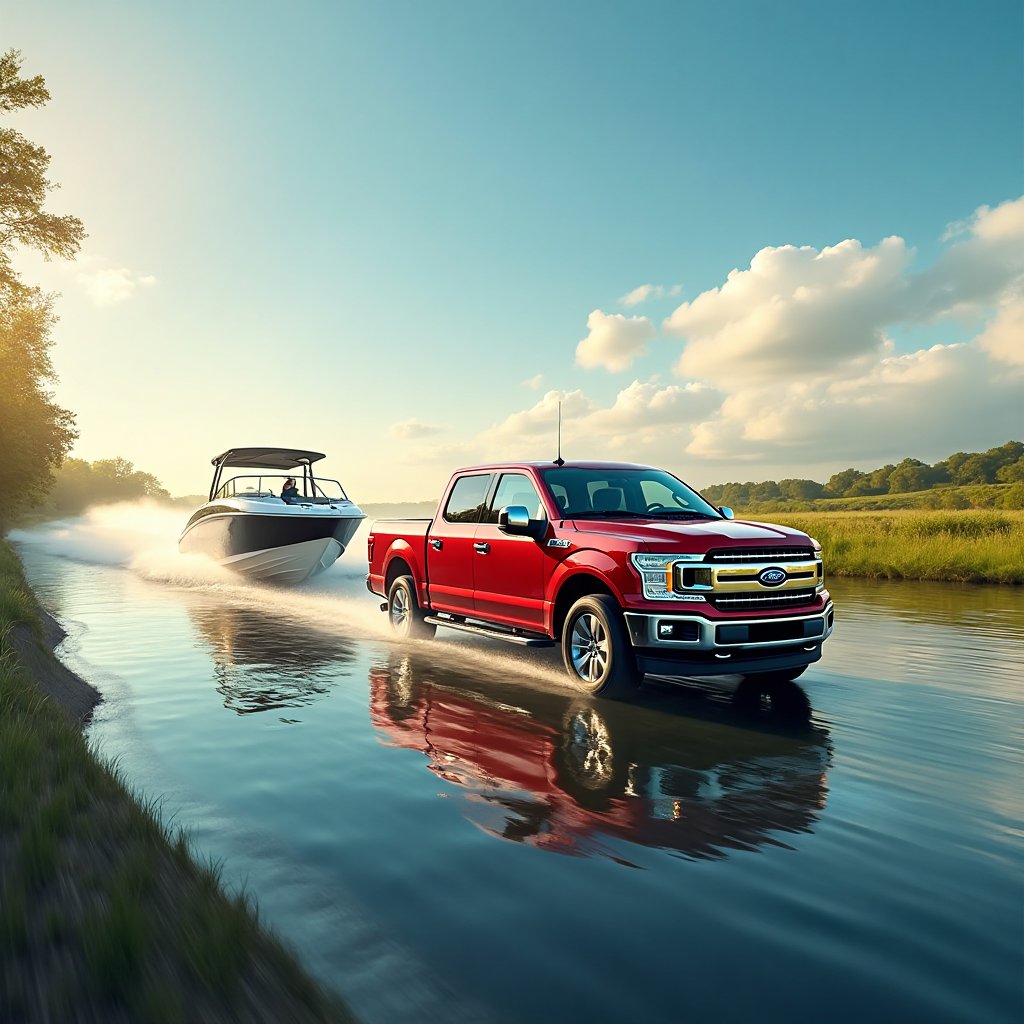
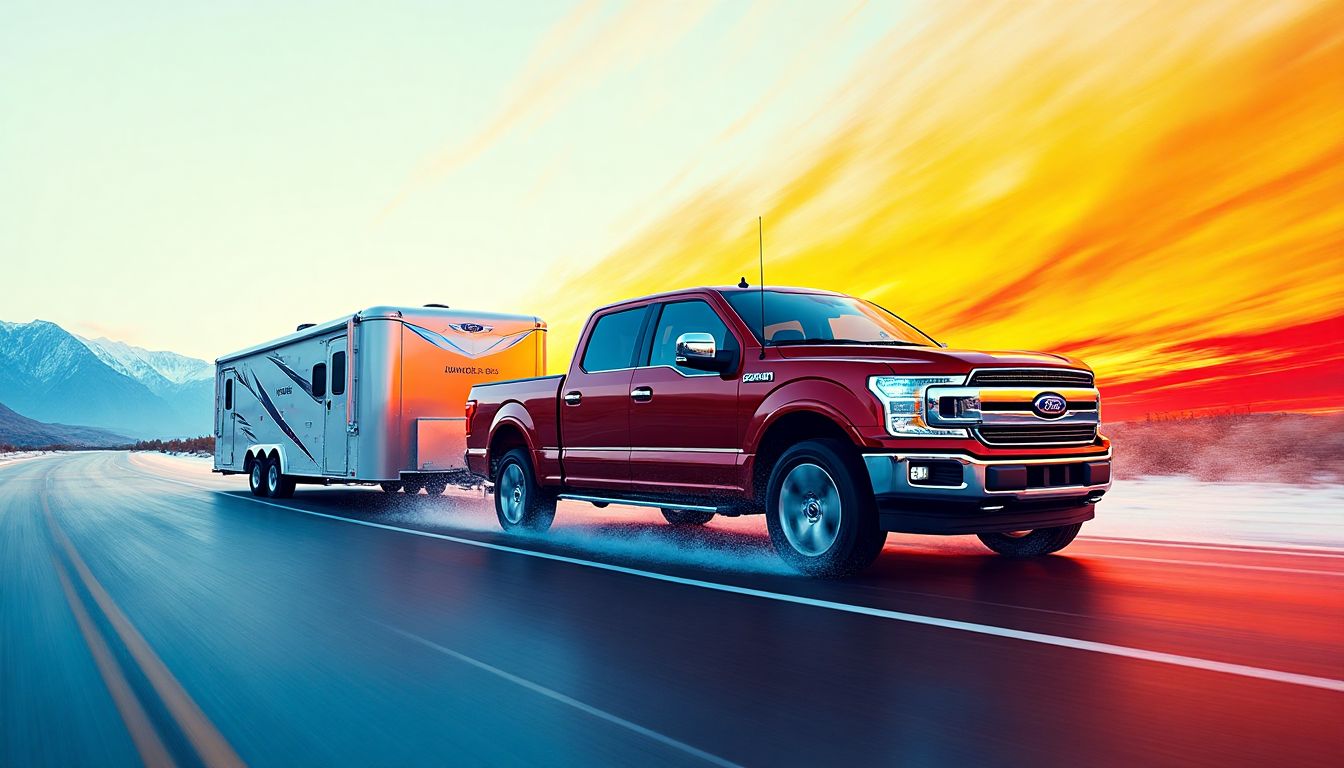
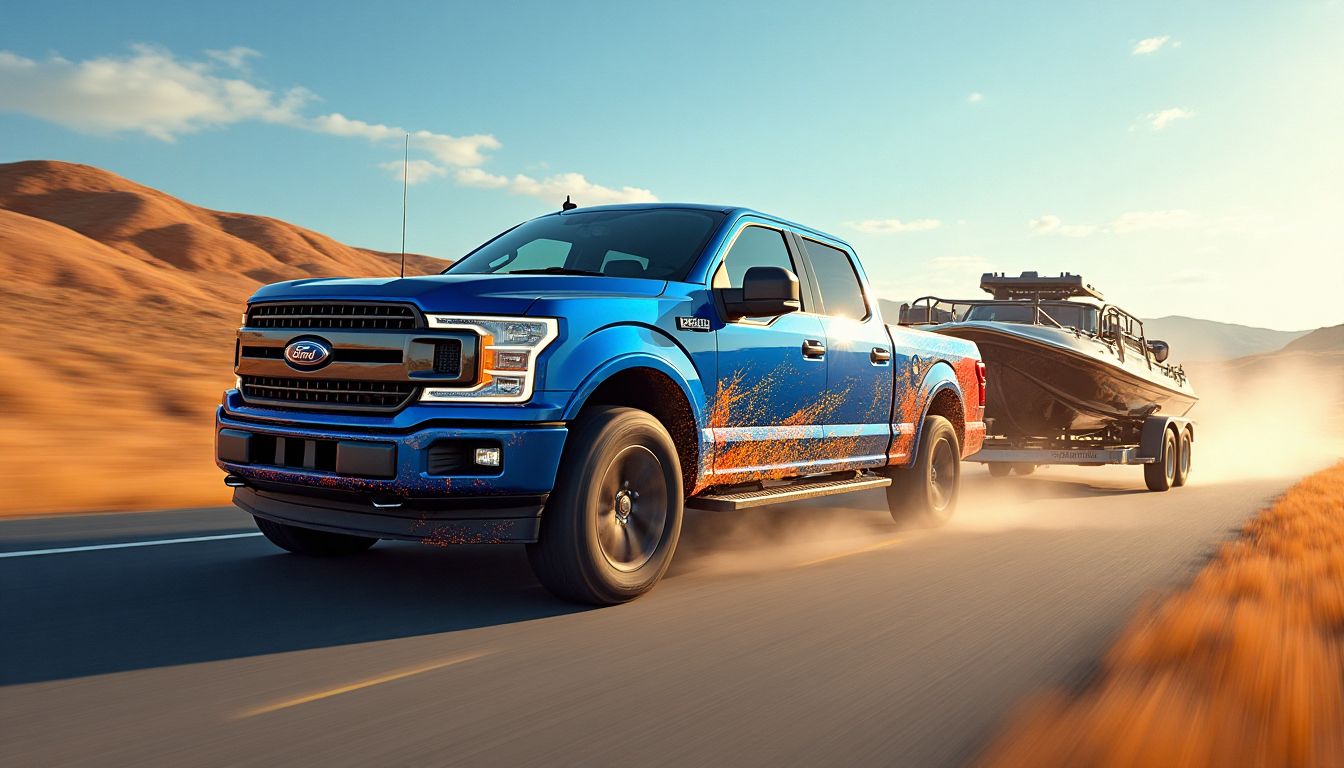
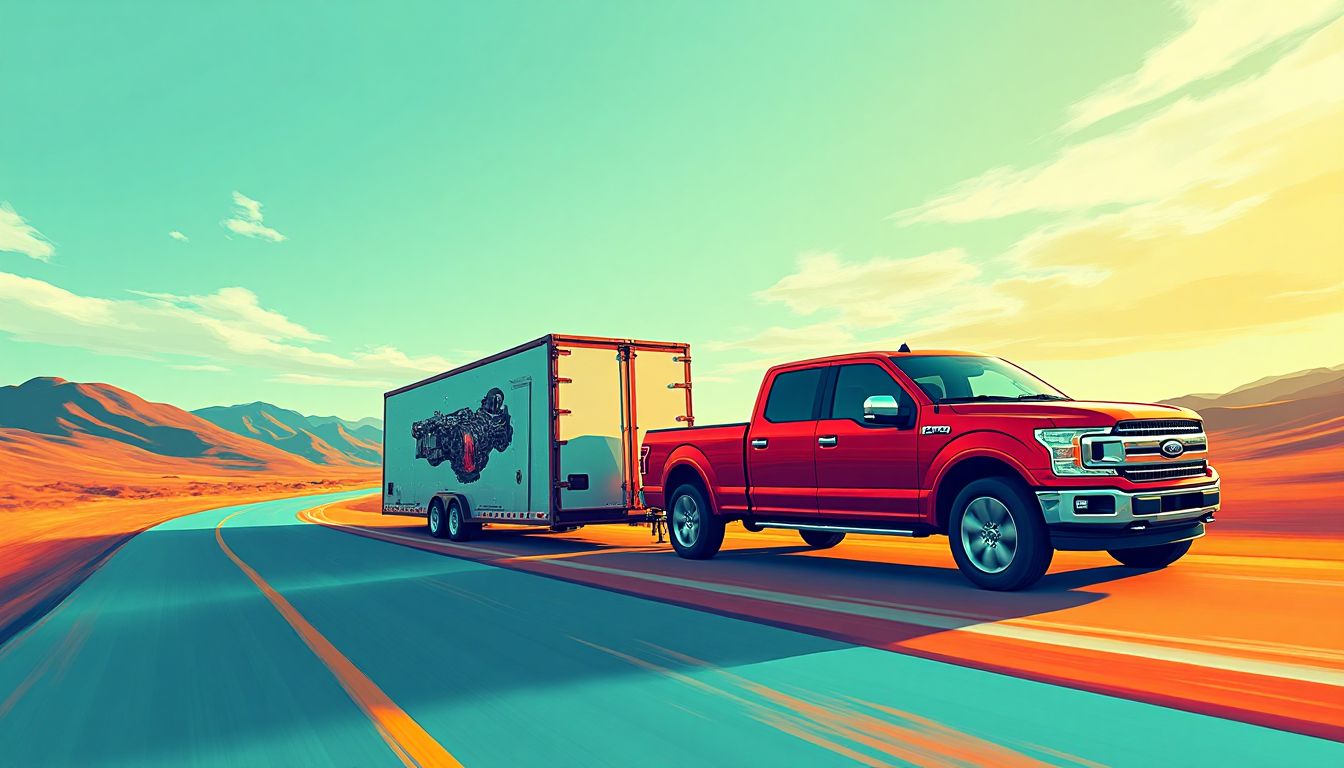
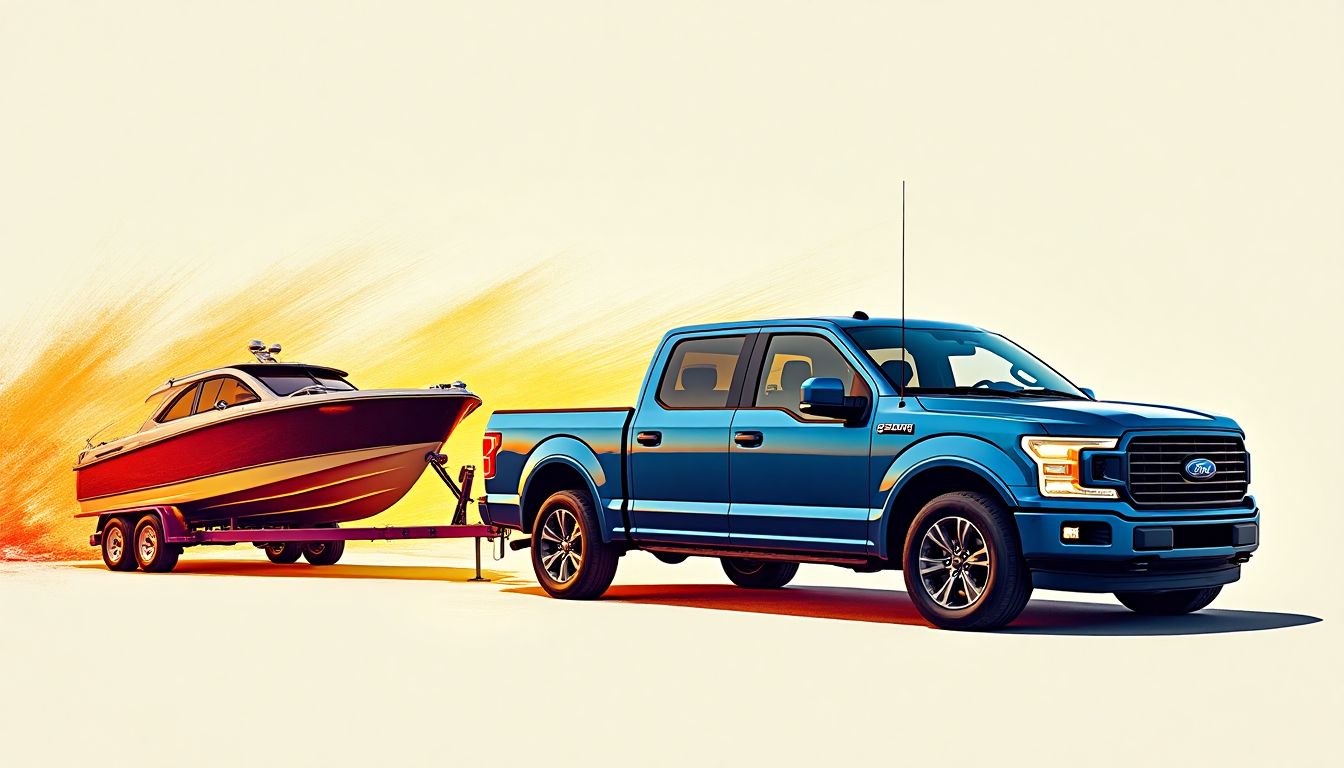






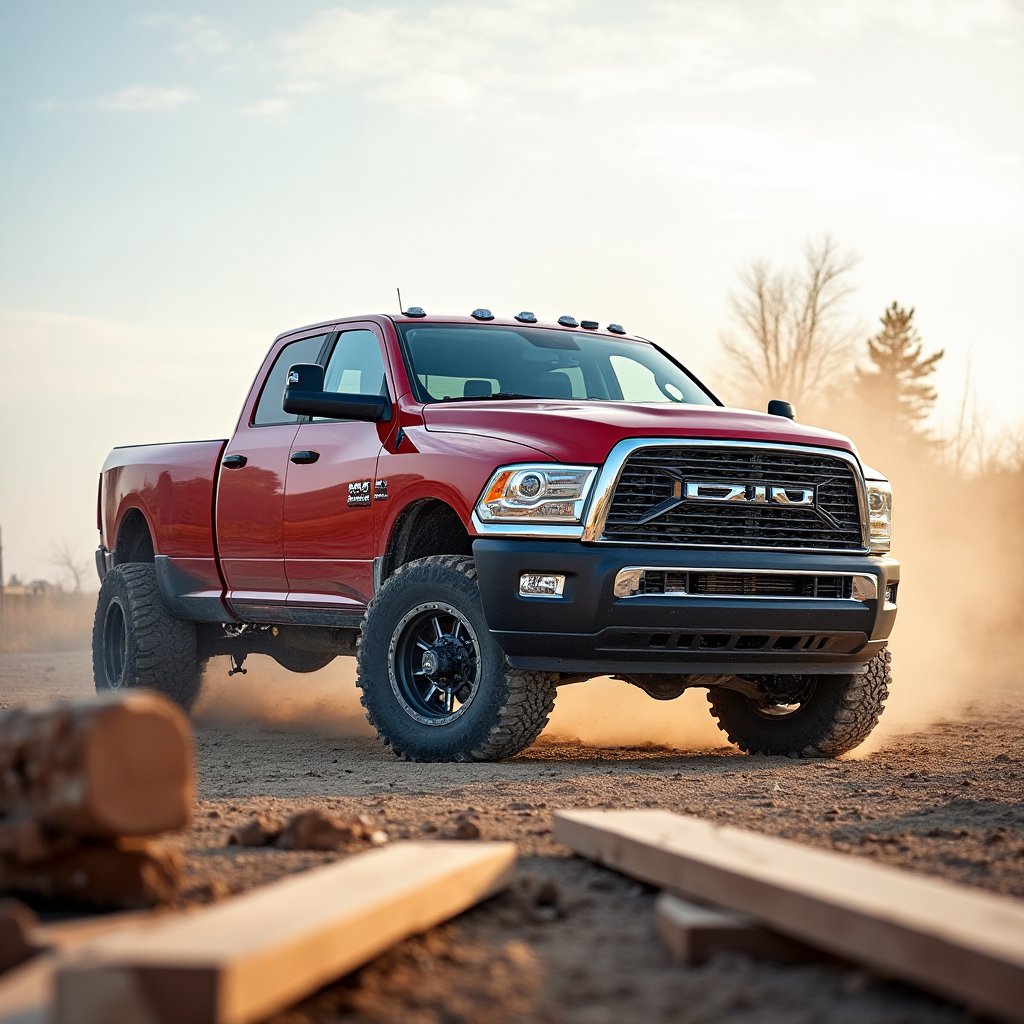
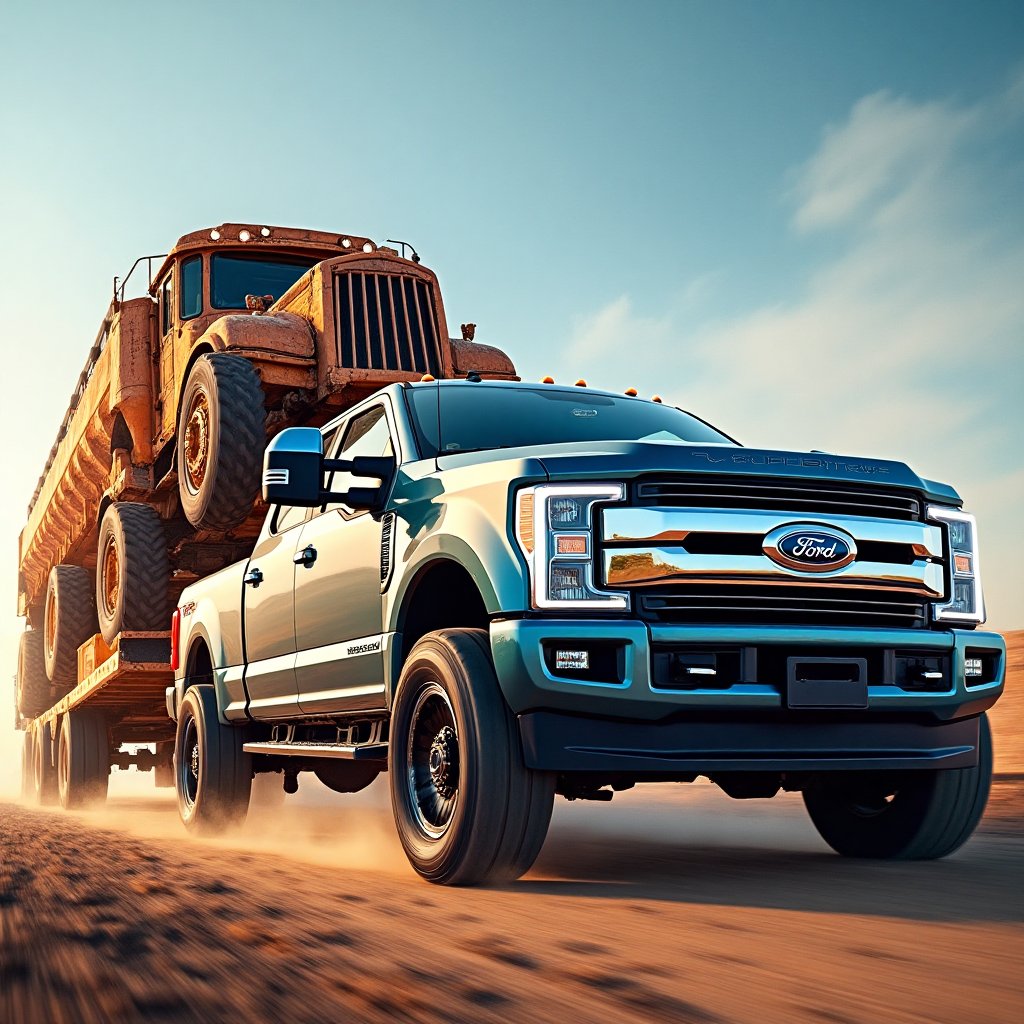
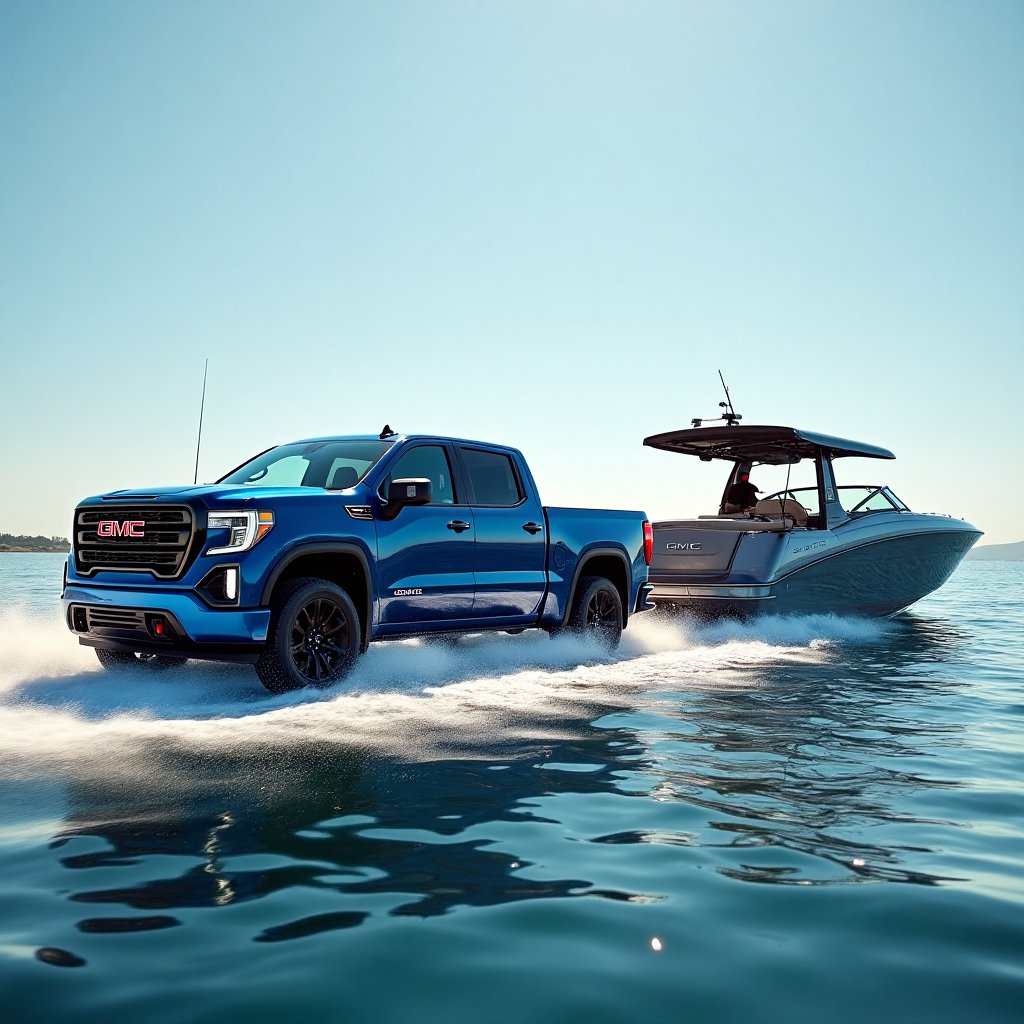















Post Comment
You must be logged in to post a comment.